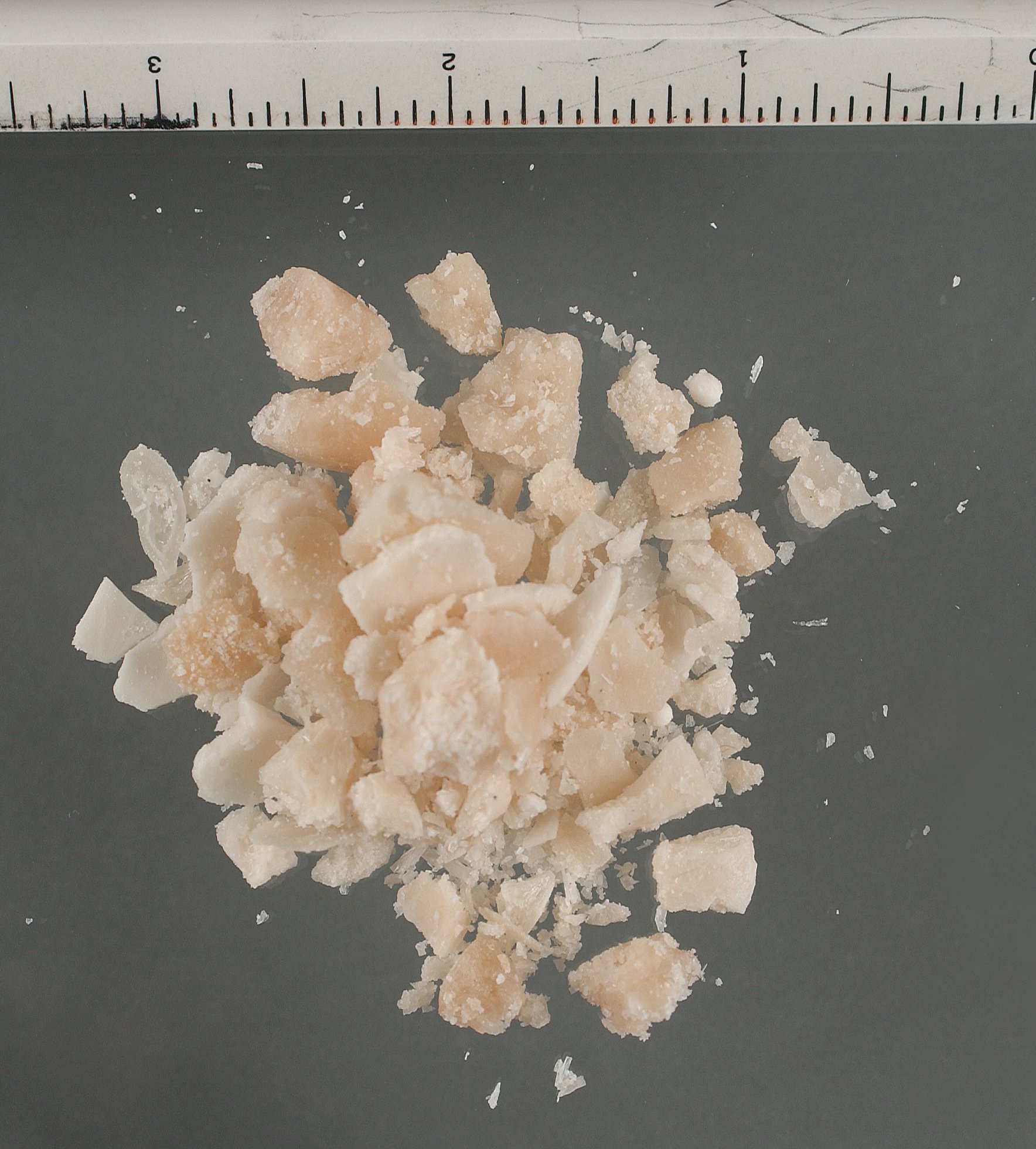Crack is a form of cocaine, a stimulant derived from the coca plant. It is a form of cocaine freebase, whereas powder cocaine is a hydrochloride salt. Whereas powder cocaine is normally consumed nasally or intravenously, crack is inhaled. Crack comes in the form of small, off-white 'rocks,' which are smoked using a special pipe. It causes a stimulant effect when inhaled, and lasts for only a few minutes. The intensity of the rush it provides, along with the short duration place it among the most addictive forms of any drug.
Crack was first reported as early as 1980, in places like Miami, Houston, Los Angeles, and San Diego. With a large supply of powder cocaine in the United States in the early 1980's prices fell. Crack was a way that dealers could make huge profits despite the drop in prices of powder cocaine. Crack was able to be sold for cheap, with one dose going for as little as $2.50. Even at these low prices, dealers were able to profit tremendously, because the amounts being sold were much smaller than for powder, meaning that even though the cost may seem low, the profit would be much higher. Unfortunately, with such low prices, it made cocaine more accessible, especially with prices for powder cocaine around $100 per gram. This, combined with the addictive qualities of crack, led to an epidemic.
The first large scale use of crack was reported in 1984 in Los Angeles. By 1986, it had spread across the country. This led to violence and health problems. Steven D. Levitt and Kevin M. Murphy of the University of Chicago concluded,
"Between 1984 and 1994, the homicide rate for black males aged 14 to 17 more than doubled, and the homicide rate for black males aged 18 to 24 increased nearly as much. During this period, the black community also experienced an increase in fetal death rates, low birth-weight babies, weapons arrests, and the number of children in foster care."
Violence increased because of dealers and gangs trying to corner their respective markets, as well as crimes perpetrated by addicts in order to acquire more crack. Police enforcement against crack led to further incidence of violence. The moral panic over crack, and all the media coverage devoted to it helped to get the word out about it, and led to even more people who would abuse it.
From 1984 to 1987, 94,000 people were hospitalized for cocaine related emergencies. Health problems from crack can be a result of cardiac problems caused by overdose or long term abuse, as well as due to effects from the sometimes toxic adulterants used to cut the weight of crack to increase profits. Because of the variable purity of street crack, overdose is a possibility when the crack is unexpectedly pure. In addition, there was the problem of crack babies, babies born to crack-addicted mothers. These babies were often born underweight or premature. Babies with a low birth weight as well as premature babies have a much greater chance of dying in their first month of life than normally weighted babies.
The crack epidemic finally came to an end in the early 1990's as crack use began to be stigmatized. Younger people saw the effects it had on the users, and chose not to use it. It became associated with all the negative effects it had, and usage rates dropped sharply. The crack epidemic was a grim affliction on all those whose lives it touched.
Sources
http://www.cocaine.org/
http://www.nytimes.com/1999/09/19/us/crack-s-legacy-a-special-report-a-drug-ran-its-course-then-hid-with-its-users.html
http://en.wikipedia.org/wiki/Crack_epidemic_(United_States)
http://articles.latimes.com/2010/aug/07/local/la-me-banks-20100807/2
Image credit
http://trainnwreckk.blogspot.com/2010/11/plague-for-profit-look-at-crack.html

No comments:
Post a Comment